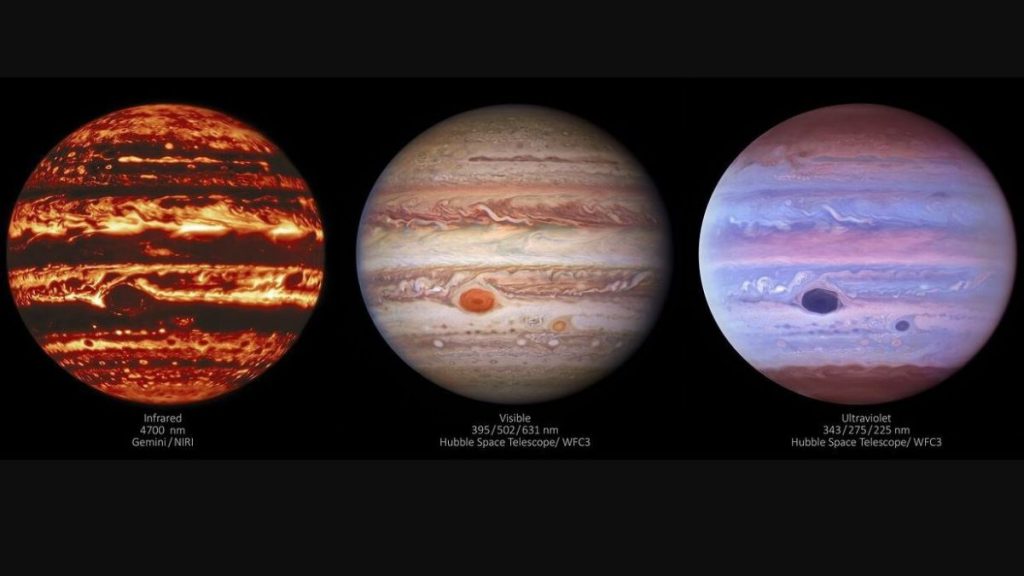The National Aeronautics and Space Administration (NASA) and the European Space Agency have taken a step forward in exploring the surface of Jupiter thanks to Taking three pictures with different techniques made it possible to observe the different atmospheric characteristics of the planet.
Photos were taken with Three types of light: infrared, visible, and ultraviolet. The first was captured by the Gemini North Telescope in Hawaii, while the next two were captured by the Hubble Space Telescope. The researchers’ surprise came when, When comparing the three images, they saw how the Great Red Spot, Jupiter’s storm system and winds capable of engulfing Earth, were indistinguishable in the infrared image.
New stunning Jupiter images from Gemini North and the Hubble Space Telescope show the planet in infrared, visible and ultraviolet wavelengths.
(Credit: International Gemini Observatory / NOIRLab / NSF / AURA / NASA / ESA, MH Wong and I. de Pater (UC Berkeley) et al.) pic.twitter.com/DDHyIfY1kD
– Universal-Sci (universal_sci) May 12, 2021
This is because Infrared light tends to show areas covered in clouds that make the Great Red Spot less prominent, while visible light and UV rays allow the phenomenon to capture and reflect the glow. The clouds, however, do appear well and can be distinguished across all images.
The Great Red Spot is like an “ocean swirl.”
Scientist Mike Wong compared the Great Red Spot phenomenon to “Ocean vortices”, because they are a storm system that rotates in the opposite direction to the rest of the clouds on the largest planet in the solar system.
“As the storm clouds rotate, you can have a small anomaly that forms these vortices that roll on themselves. This is the interpretation of these phenomena, which start out as something weak, but can be very stretched.”Wong explained.
Thanks to the three pictures, Researchers were able to expand their knowledge of the Jovian atmosphere and the behavior and vortices of clouds.







More Stories
The final moments of the “Halloween Comet” were captured by the SOHO spacecraft
University of Michigan scientists have discovered what’s inside a black hole
NASA shares the scariest images of the sun in the lead-up to Halloween